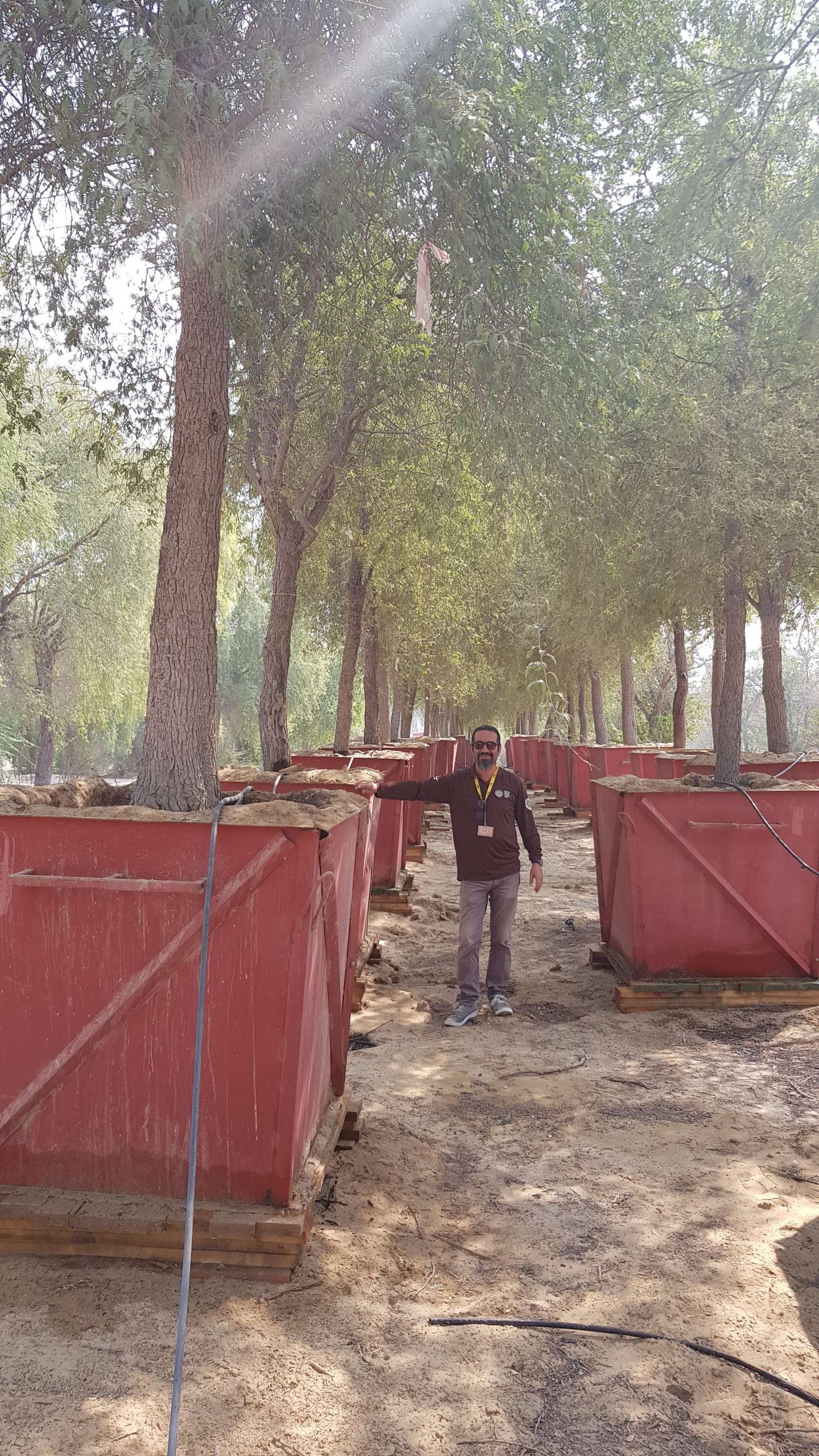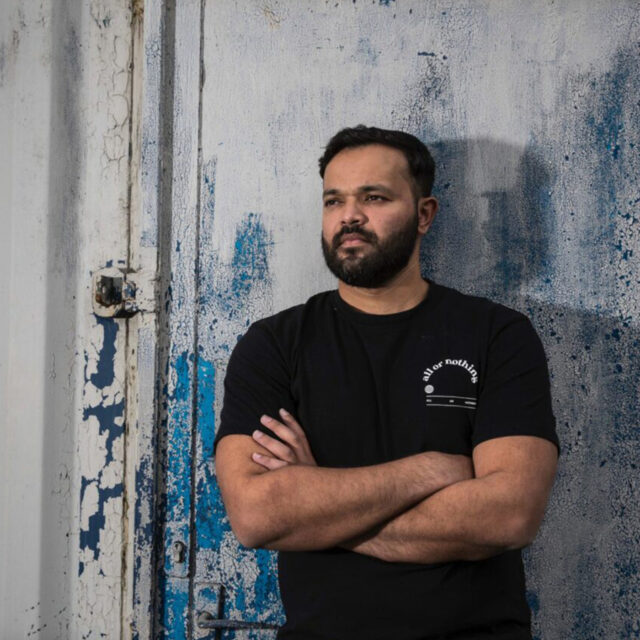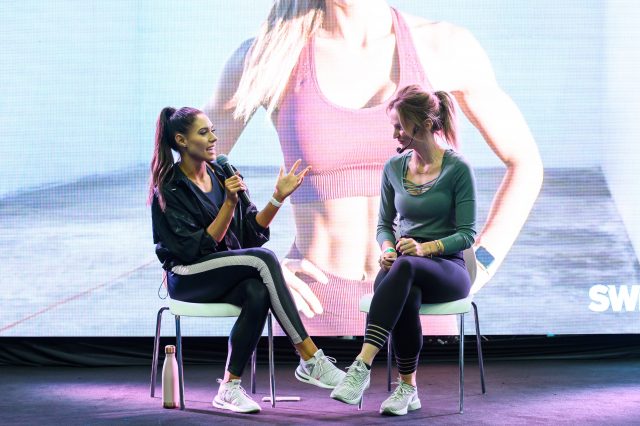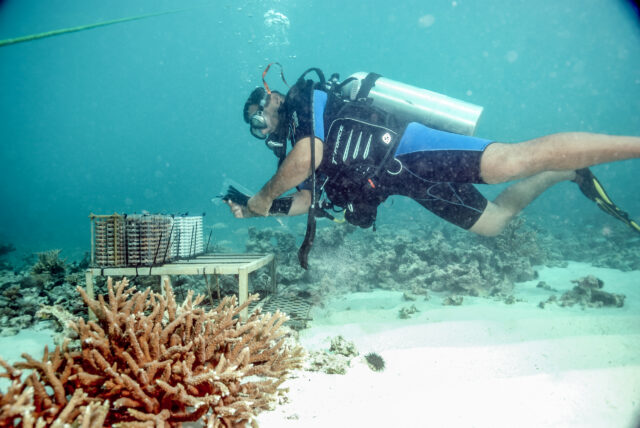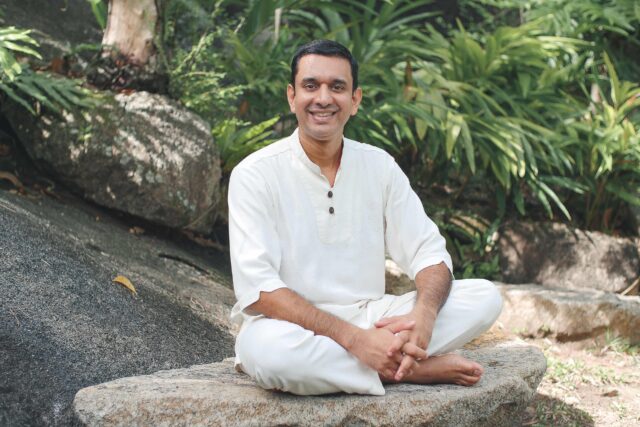Bülent Cignez is a landscape architect from Turkey and the project manager for Urban Planning and Public Realm for Expo 2020, meaning he’s responsible for all the plants, trees and shrubs that visitors see as they walk through the grounds.
That’s around 14,000 trees (including 2,500 date palms) and 3.5 million shrubs and ground cover. Bülent scoured the UAE for local varieties, all grown without any chemicals, using organic compost straight from the Expo nursery, and watered with treated wastewater. All the seeds have been harvested to grow future plants, as have the dates from the date palms. And once a desert expanse, all of this greenery has attracted bees, parrots and lots of birds and insects. As Bülent told The Livehealthy Podcast, it’s been quite a task and a journey since he started on the project four years ago when it was just in the early design stages.
What was the vision was for the green landscape of Expo?
Expo consists of many different projects, each with their own designer. We collected the plant list from each project and used it to develop our master plant list. That included numbers, the names of plants, size, root growth et cetera. The plan was we should use as many native plants as we can.
Did you know anything about native plants in the UAE?
I’ve been in UAE since almost 15 years. Yes, I knew, but not this much. Normally, you don’t see much on the landscape, especially in public realm projects. You see them in the desert. For example, after the first rain, it starts growing and then summer comes. When summer comes, they die back. Then next year, if there’s a rain, it’s come back again. It was a challenging part of the plantation for Expo.
How did you go about learning?
When we receive our plant list, there was approximately, as I remember, 1,995 different native species. When we checked what is available in the market, it was just few. One way to overcome that is to propagate them. But in order to propagate, we should have the seeds, but the seeds also were not available. Then we found out that there is a UAE seed bank in Sharjah. We went there, we met some professors, we give them a list, and when they checked the list, they said, ‘okay, this seed, yes, we have, but this we don’t have’. We found about 65 percent of what we are looking for and then the rest we looked at nurseries. There are not the big nurseries, but small nurseries that propagate native plants. Me personally, I visited almost each and every nursery in UAE. From Sharjah to Ras Al Khaimah to the Saudi border; Abu Dhabi, Liwa. Then we replaced some of the plants that we couldn’t find with the similar native plants and this is how we achieved our target. Right now in Expo, there are approximately 75 to 80 native plants and they’re all doing fine.
Where did you grow them originally, before the site was ready?
As I said, there are some small nurseries. We made a deal with them. They propagate for us. There are some we propagate in our nursery. In Expo, we have a nursery the size of 22 hectares. It means roughly 22 football stadiums. All the plants that have gone to sites, it passes through the nursery. 22 hectares is quite big as a size, but believe me, in the middle of the project, before the COVID, we thought that it was not sufficient for Expo, but somehow we managed.
So can you tell us about some different species?
When we planted them, first of all, the water requirement. If you mix the native plants with adaptive plants, of course, the water requirement of native plant is less than the others. You need to split the irrigation. Irrigation, it was one of the challenges for us. The other thing is, normally, those plants are living in the sand. They don’t have any organic fertilizer or anything, but of course, we add organic fertilizer. They did pretty good. When it comes to the maintenance, I saw that some of the plants, they don’t like trimming, for example. When you trim them, they start to die back.
What plants should people be looking out for?
If you walk in the Ghaf Avenue, you will see big major ghaf trees. We transplant 460 Ghaf trees from Mushrif Park, a park in the city. For example, if there is any construction activities and they should remove some ghaf trees, they remove and send to Mushrif Park. These are roughly six to eight meters height. We did that without pruning them. Normally, when you transplant, you cut the roots, it means you need to cut the canopy and you’d reduce the canopy as well. It took us around six months to make them ready to go to site. We cut the roots, we put them in a box, and then we keep in Mushrif Park for a months, and then we transplant to Expo. I guess, among 460, only three Ghaf trees died.
How tricky is it to move plants around?
We need to remove the canopy, we need to remove the roots. These are old trees. The difficulty with Ghaf trees, they have a deep root. It’s different than if you remove in some public area or in the desert. For them in the desert, they produce more roots to find the water. If it’s in a public area, it means it’s irrigated and the root system, it’s around the root balls. We have more chance to survive.
Tell us about the care and maintenance of them during Expo…
Normally, we are working at night. After Expo closed, we get in, we do the maintenance. We have a team of approximately 70 people and we have a full automatic irrigation system. We can monitor the flow, we can monitor the timing. If there’s any leakage, we can see from the our system. For the ghaf tree, normally it’s 40 to 60 liters per day; palm trees, about 100 to 120 liters per day; shrubs 12 liters and for the ground cover it’s 10 liters per day. Right now because it’s wintertime, so the system reduces automatically. Also, if there’s any rain, the system cuts the water automatically.
What about Sustainability Pavilion?
On the back side, we have a vegetable garden that we grow tomato, we grow rosemary, pepper, watermelon, lemongrass, sugarcane, and lots of crops. Even if you go now, you can see the tomatoes are fruiting.There are also local grasses. Lemongrass in the vegetable garden area, but the rest of the grass is native from the UAE flora and fauna. We also grow coffee in Sustainability Pavilion. This area are protected from the wind, also from the sun, so they have lots of shade. We grow coffee and it is growing. Last summer they didn’t die.
What’s the future of these plants?
We know some of the areas are going to be removed, for example, car parks. We have trees in the planter box in the car parks. We’ll just take them, keep in a nursery and we’re going to use them back on legacy. Whatever is going to be removed, which area is going to be removed, first, we will enter, we will remove the trees, shrubs, we will keep them in the nursery, maintain them, and we’ll reuse them on the legacy. It’s not going to be lost.
